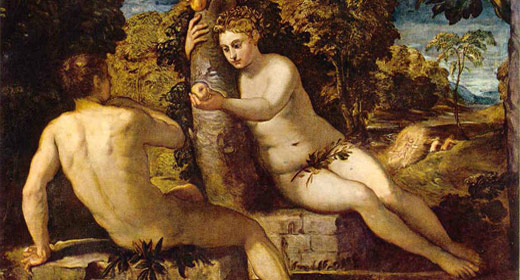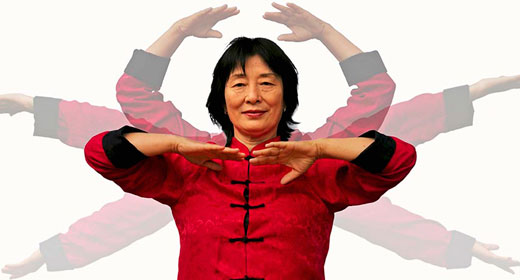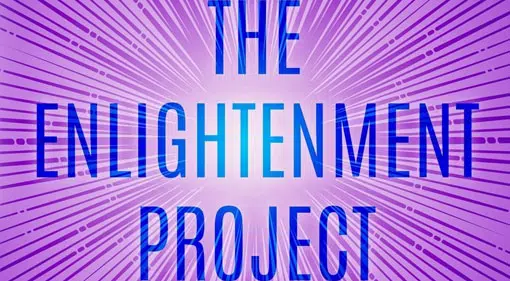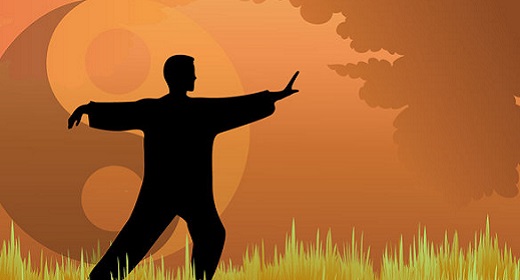by Jonathan Robinson: In 1992, I set out on a mission to interview as many spiritual teachers and gurus as I possibly could.
What I Learned Interviewing 100 Famous Spiritual Teachers
I wanted to find out what they were really like, and what wisdom they could impart to me. My 30-year quest has led me to interview everyone from Deepak Chopra, Oprah, and the Dalai Lama, to now deceased spiritual giants such as Mother Teresa, Wayne Dyer, and Ram Dass. Eventually, I turned these interviews into a podcast, Awareness Explorers, in which I continue to talk to popular teachers such as Byron Katie, Adyashanti, Marianne Williamson, and Rupert Spira.
After 100 such interviews, I’ve learned many lessons and observed certain traits that virtually all these wise beings have in common. In my latest book, The Enlightenment Project, I describe many of the lessons, methods, and personal anecdotes I received from these spiritual luminaries. In this post, I hope to give you a brief taste of some of what I learned from my unique adventures.
What Spiritual Giants All Share
Although famous teachers are sometimes put on a pedestal for being “superhuman,” it has actually been their simple humanity and kindness that has had the most impact on me. Case in point, in the 1990’s I was on The Oprah Show on several occasions for books I had written. The first time I was on her show, Oprah came up to me during the commercial and told me how much she liked reading about the love I had for my dog, Rama. She then asked how Rama was doing. At the time, Rama was having weekly seizures, and I was very worried about him. Upon hearing that, Oprah said, “Oh that’s horrible; I’ll be sure to pray for him.” That was our entire off camera conversation that day.
Well, two years later I’m on Oprah’s show again and, during the commercial she comes up to me and says, “Good to see you again Jonathan; how’s Rama?” It made no sense to me that Oprah, one of the most powerful and loved women on the planet, would remember a 10 second conversation from two years ago. I responded quizzically, “Who’s Rama?”
Oprah answered, “Rama is your dog. He was having seizures and I prayed for him. How’s he doing?” Her answer made my mind melt. I stammered, “Better, much better.” Oprah seemed relieved, and I was very impressed that such a powerful and wonderful a teacher as Oprah would follow through with her kind gesture of praying for my beloved doggie.
As I reminisce about time I’ve spent with various teachers, perhaps the first thing that stands out is their consistent kindness. Time and time again, the people I interviewed displayed little acts of kindness that touched my heart deeply. For example, Dr. Wayne Dyer would always go out of his way to give me useful advice. Ram Dass, the author of Be Here Now, never failed to give heartfelt answers to letters I had written to him. Obviously, such famous teachers are extremely busy, but they prioritized kindness and personal connection—despite how much they had going in their lives.
Other traits I consistently witnessed in the teachers I interviewed were humility, a sense of humor, and a deep sense of presence. No doubt it is hard to be humble when everyone you meet believes you’re the greatest thing since sliced bread. Yet somehow the 100 people I interviewed all seemed to display such humility. Indeed, I have often asked such teachers how they managed to feel humble despite being so well-known and well regarded by millions.
Their answers have varied. The late Mother Teresa felt like everyone was an equal child of God and was very aware of her own “many sins.” On the other hand, the American spiritual master, Adyashanti, simply explained that there is little ego left in him due to Grace, and it is only ego that lacks humility. Ram Dass described how, when people compliment him on some wonderful trait he has, he simply silently thanks whoever in his past was most responsible for instilling that particular trait in him. By seeing how he had been graced by the help and wisdom of so many others, Ram Dass was able to tap into feeling truly humble and grateful.
As I mentioned earlier, another trait that so many spiritual giants shared was a good sense of humor. When people would ask me what it was like interviewing the Dalai Lama, I said it was like being with the playfulness of a five-year-old child, mixed with the wisdom and heart of a saint.
When I asked the Dalai Lama what advice he had for people who are in conflict, he said, “Ah, I have an ancient Tibetan Talisman I will show you that will help.” Then he left the room to retrieve this magical object. Upon his return, The Dalai Lama told me to close my eyes, then said, “I am now wearing this Talisman that will help end all conflict between people.” Upon opening my eyes, The Dalai Lama was wearing a big red Bozo nose. He started laughing uproariously. Finally, he stated, “It’s almost impossible to be in conflict if someone is wearing one of these noses.” We shared a long, deep laugh together.
The last trait I will mention that renowned spiritual leaders seemed to all share was a deep sense of presence. It’s a wonderful feeling to have someone’s complete and undivided attention. In a world in which undivided attention is so rare, such presence always felt like a heart-warming gift. I once asked Wayne Dyer about how he maintains such sincerity—even when he might be doing five other interviews that same day. He replied, “I give my best in every interview because people give me credibility. With that credibility and impact, comes great responsibility.” I loved that response.
Although each of the spiritual leaders I got to know were very sincere and displayed great kindness, humor, humility, and presence, they also had very human faults. Many people assume that spiritual leaders and people who are “enlightened” should be perfect human beings. They are not. For better or worse, they are very much human. For example, I noticed that Mother Teresa seemed sad and disorganized, Ram Dass didn’t seem to take good care of his body (which eventually led to a stroke), and Sai Baba (and many other gurus) have been accused of sexual impropriety.
However, just because someone isn’t perfect or sometimes displays crude behavior doesn’t mean what they have to offer isn’t pure gold. In fact, seeing that many teachers were flawed human beings with messy lives actually inspired me. After all, if they could display such wisdom and lofty behavior while being highly imperfect, then maybe so could I.
Lessons Learned
People have often asked me what important insights I’ve learned from meeting so many spiritual teachers. In my book, The Enlightenment Project, I go into detail about 40 specific lessons I’ve learned, ranging from secret consciousness techniques to spiritual ways to handle your job and your money. Yet, perhaps the most striking thing I noticed was how each teacher had, through experimentation, found some method for tapping into inner peace that powerfully worked for them.
Amazingly, the technique that transformed their life was little known—or had even been invented by them. Therefore, in my latest book I describe many of these ingenious approaches to tapping into inner peace, joy, and transcendence. In my own experience, I found many of the techniques I gathered from these teachers to be truly life transforming.
One surprising lesson I learned after so many interviews was that my intention to find wisdom in others was even more important than who I was interviewing. Here’s a brief and funny story that illustrates this point: Many years ago, I led a spiritual group of 30 students who would watch movies that conveyed a powerful spiritual message. After they’d watch a movie, I’d have them write down what they learned from viewing the profound movie I had presented to them. During one week, I was going to be away, so I gave what I thought was the movie, Gandhi, to a friend to play for this group of people. Little did I know, but the actual movie in the DVD sleeve was the movie, Men in Black 2.
In case you haven’t seen it, Men in Black 2 was blasted by critics and audiences alike for being both stupid and boring. However, this group of people was conditioned to see the “profound message” within any movie I presented to them. Evidently, their intention to see something profound in Men in Black 2 overwhelmed the inanity of the actual movie. Virtually everyone wrote glowing reviews of what they had learned from this movie. One participant even reported, “Men in Black 2’s message has dramatically impacted how I see the world in a positive way. It was transformative.”
The reason I tell you this story is because it shows how powerful an intention to learn can be in affecting how we view or experience something. After a while, I learned that it was largely my level of reverence and respect for these teachers that was leading me to get so much value from hearing their words. As an experiment, when I imagined my wife or my friends as great spiritual beings emanating pearls of wisdom, I felt similarly “filled-up” and inspired by their words. Try it for yourself. Just imagine that each person you meet or spend time with is divinely sent to teach you some important lesson or wisdom. If you do that, you’ll see that lessons are always available if you’re open enough to receive them.
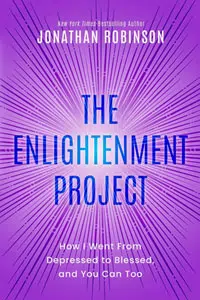 A final lesson I learned from my many interviews was that, as Deepak Chopra a stated, “We are all really spiritual beings having a temporary human experience.” It’s easy to forget that as we get lost in our day-to-day struggles. In one interview I had with a famous guru named Poonjaji, he asked me who I was when I sat down next to him. I said, “I’m Jonathan Robinson.” He just laughed, then asked again, “Who are you really?” I answered him with a list such as, “I’m an author, a husband, a man, an American, and many other roles I play. With each answer, Poonjaji just kept on laughing. Then, I noticed that there seemed to be light emanating from his joyful eyes. That caught my attention and I just quietly stared into his eyes. The next thing I knew, I felt a wave of love wash over me that was so strong that it left me sobbing in his lap. As I quietly cried tears of joy in Poonjaji’s lap, he patted me on the head and said, “This love and this peace you feel now is who you really are, and your job in life is to find your way back to it as best you can.”
A final lesson I learned from my many interviews was that, as Deepak Chopra a stated, “We are all really spiritual beings having a temporary human experience.” It’s easy to forget that as we get lost in our day-to-day struggles. In one interview I had with a famous guru named Poonjaji, he asked me who I was when I sat down next to him. I said, “I’m Jonathan Robinson.” He just laughed, then asked again, “Who are you really?” I answered him with a list such as, “I’m an author, a husband, a man, an American, and many other roles I play. With each answer, Poonjaji just kept on laughing. Then, I noticed that there seemed to be light emanating from his joyful eyes. That caught my attention and I just quietly stared into his eyes. The next thing I knew, I felt a wave of love wash over me that was so strong that it left me sobbing in his lap. As I quietly cried tears of joy in Poonjaji’s lap, he patted me on the head and said, “This love and this peace you feel now is who you really are, and your job in life is to find your way back to it as best you can.”
To this day, I am inspired by this great teacher’s words to me while I cried in his lap. Our job in life is to find our way back to the peace and love within. Fortunately, we live in an age where there are many teachers that can point the way, and many ingenious methods that can help us find our true, eternal selves. It really comes down to priorities. By learning from great teachers, books, or even the people in our daily lives, we open the door to a life of greater depth, meaning, and love.
Jonathan Robinson is a bestselling author of The Enlightenment Project, has been a frequent guest on Oprah, and is the co-host of the podcast Awareness Explorers. You can download for free the first two chapters of his book plus get a free ebook: The 5 Easiest Ways to Awaken at: www.TheEnlightenmentProject.net

